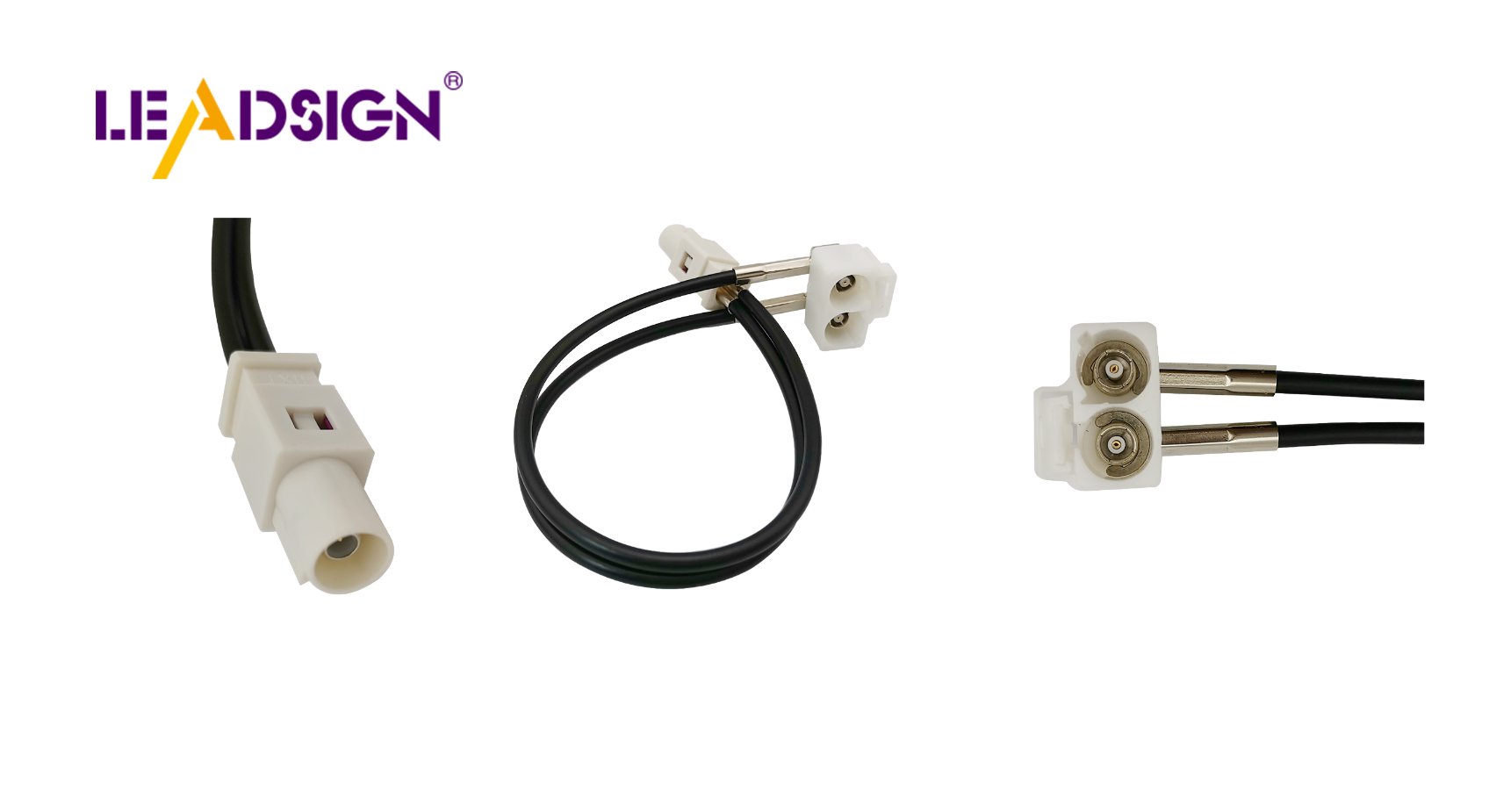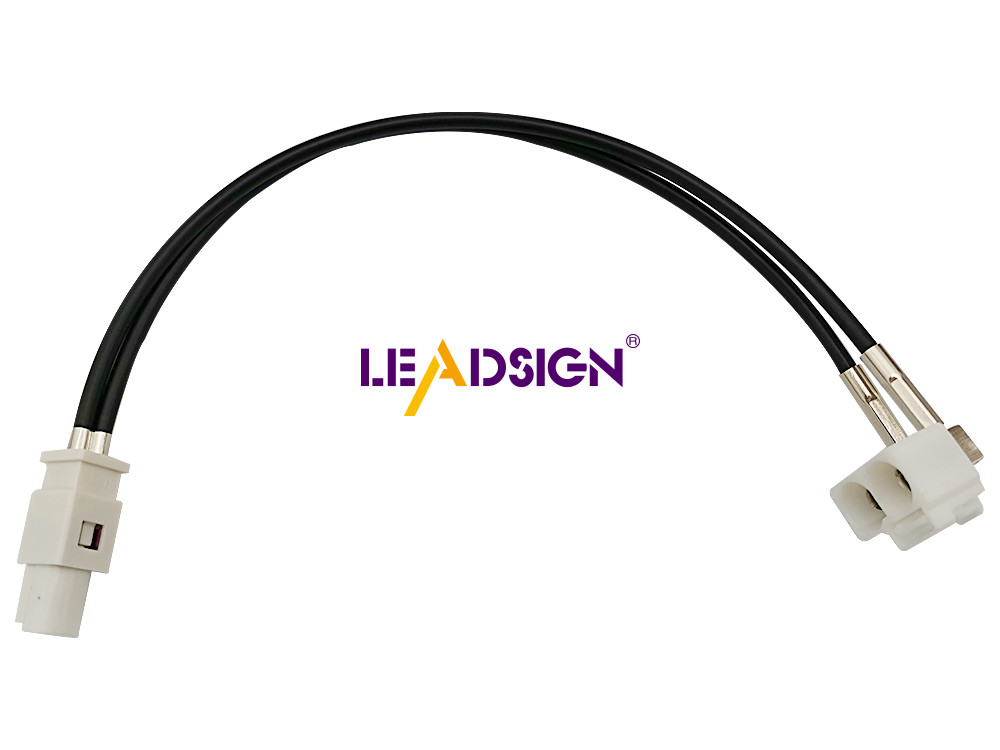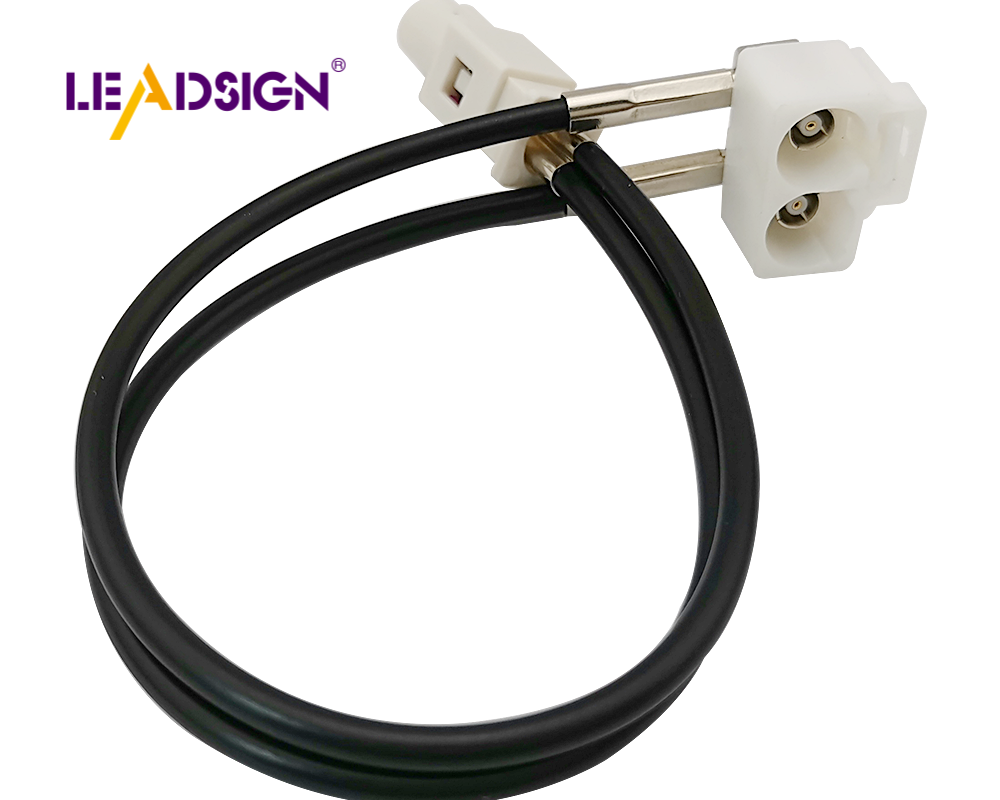Learn Car Wiring Basics with Two Pin Automotive Connectors

Car wiring looks hard, but it's easier with the right tools. If you like DIY projects, you know neat work is important. Two pin car wiring wire connectors make wiring jobs simpler. They help all parts work well together, making your car projects better. Choosing the right wire size keeps things safe, and these connectors help with that. Take on the challenge, and make car wiring a fun task.
Key Takeaways
Understanding car wiring is crucial for DIY enthusiasts, as it allows you to fix and modify your vehicle's electrical systems effectively.
Two pin automotive connectors simplify wiring tasks by ensuring secure and efficient connections between circuits, enhancing overall vehicle performance.
Always prioritize safety by disconnecting the battery before starting any wiring project and using insulated tools to prevent electrical shocks.
Invest in essential tools like wire strippers, crimping pliers, and multimeters to make your car wiring projects easier and more reliable.
Avoid common mistakes such as incorrect wire connections and using the wrong wire size, as these can lead to overheating and electrical failures.
Regularly inspect and maintain your wiring harness to prevent issues and ensure the longevity of your car's electrical system.
Practice makes perfect—start with simple projects and gradually take on more complex wiring tasks to build your confidence and skills.
Introduction to Car Wiring Basics
Learning car wiring is important for car DIY fans. Car wiring is like the car's nervous system. It sends power and signals to parts. This makes things like lights and radios work. Knowing the basics helps you fix and change things easily.
Understanding Car Electrical Systems
Car electrical systems have many circuits. They power the car. These circuits include charging, starting, and lighting. Each circuit has a job. The charging circuit keeps the battery full. The ignition circuit starts the engine.
To understand these systems, learn wiring symbols and colors. Black wires carry power. White or gray wires are neutral. Green or bare wires are for grounding. Knowing these helps you find problems.
Safety Precautions
Safety is key when working with car wiring. Electrical systems can be risky. Disconnect the battery before starting. Use insulated tools and wear gloves and goggles.
Work in a bright place to see wires well. Check your work to avoid loose connections. Good connectors keep connections strong. They stop problems and protect the car.
Follow these tips to safely learn car wiring and improve your DIY skills.
Overview of Two Pin Automotive Connectors

Two pin connectors are important in car wiring. They help connect circuits well, making things work smoothly. These connectors have two pins that fit into sockets. This lets electricity flow fast and easily. You can find them in cars, planes, and machines. Their design makes them good for safe electric connections.
What Are Two Pin Connectors?
Two pin connectors are key parts in car wiring. They have two pins that go into a socket. One pin carries electricity, and the other is neutral. When plugged in, electricity moves from the live pin to the device. This setup keeps connections steady and works well for car wiring.
Types of Two Pin Connectors
There are different two pin connectors for car projects. Many are waterproof with T-shaped corners, making them strong. They fit into female sockets, linking wires and devices. You see these in places like factories and electronics. Knowing the types helps pick the right one for engine wiring.
Tools Needed for Car Wiring
When you start wiring a car, having the right tools is key. These tools make the job easier and keep your work safe. Here’s a list of must-have and extra tools.
Must-Have Tools
Wire Strippers: Good wire strippers are a must. They take off wire covers without harm. The Snap-on PWCS7ACF and PWCSS7ACF are great for fixing wires, especially with uninsulated butt connectors.
Auto Electrical Connectors: These connectors join wires to car parts. They help electricity move smoothly in the car.
Butt Connectors and Crimping Pliers: Use these for joining wires. They make sure your wire links stay strong and work well.
Weather Pack Connectors: Use these when wires face rain or sun. They stop rust and keep wires good for long.
Extra Tools
Multimeter: This tool checks voltage, current, and resistance. It helps find and fix electric problems.
Heat Shrink Tubing: Use this to cover wires. It adds protection from water and wear.
Soldering Iron: If you like soldering, this tool is handy. It makes strong, lasting wire links.
Cable Ties: Keep wires tidy with cable ties. They stop tangles and help with future fixes.
With these tools, you can wire a car confidently. Each tool helps make your wiring last and work well.
Step-by-Step Guide to Using Two Pin Connectors

Two pin connectors are important in car wiring. They keep connections strong and let electricity flow well. Follow this guide to use them in your car projects.
Preparing the Wires
Gather Your Tools: Get all your tools ready. You need wire strippers, crimping pliers, and two pin connectors. These tools help you work with wires easily.
Cut the Wires: Measure how long the wires should be. Use cutters to make them the right length. Make sure they reach where you need them to go.
Strip the Insulation: Take off about half an inch of the wire cover. This shows the metal inside, which is needed for a good connection.
Inspect the Wires: Look at the wires to see if they are damaged. Bad wires can cause problems with electricity in your car.
Connecting the Wires
Insert the Wires into the Connector: Put the bare wire ends into the connector pins. Make sure they fit well to avoid loose connections.
Crimp the Connector: Use pliers to press the wires into the connector tightly. This keeps the wires in place and ensures a good connection.
Check the Connection: Pull the wires gently to see if they are secure. A strong connection is important for your car's wiring to work well.
Testing the Connection
Reconnect the Battery: After connecting the wires, attach the car battery again. This lets you test if everything works.
Test the Circuit: Start the car and see if the parts work. If they do, your wiring is done right.
Troubleshoot if Necessary: If things don't work, check the connections again. Make sure wires are in place and crimped well. Fix any loose parts to solve the issue.
By following these steps, you can use two pin connectors in car wiring. This helps you learn and keeps your car's electrical system working well.
Common Mistakes and Troubleshooting Tips
When doing car wiring, mistakes can happen. These errors might cause bad connections or harm your car's electrical parts. Knowing these mistakes and how to fix them helps make wiring easier.
Avoiding Common Mistakes
Wrong Wire Connections: A common mistake is connecting wires wrong. This can make circuits not work or short out. Always check your connections with the wiring diagram.
Wrong Wire Size: Picking the wrong wire size can cause overheating and fires. Choose the right wire size for the current it carries.
Bad Crimping: Poor crimping makes loose connections. Use good crimping tools and make sure wires are tight in connectors.
Skipping Safety Steps: Not disconnecting the battery can cause shocks or damage. Always disconnect the battery and use safe tools.
Ignoring Harness Instructions: The wiring harness keeps wires neat. Ignoring instructions can tangle wires and make fixing hard later.
"We see wiring bundles, splices, and connections that leave us awake at night wondering if the guy got home without help from the fire department." This shows why avoiding bad wiring mistakes is important.
Troubleshooting Tips
Check Loose Connections: If a circuit fails, check all connections. Tighten any loose wires to fix it.
Use a Multimeter: Test for voltage and continuity with a multimeter. It finds where the electrical flow stops.
Look for Damaged Wires: Check wires for wear or damage. Replace broken wires to stop more problems.
Review the Diagram: If unsure, look at the wiring diagram. This makes sure connections are correct.
Get Help if Needed: If problems stay, ask a professional. They give expert help and solutions.
"When you don't follow the correct wiring protocols for a starter it will put a strain on the entire electrical system." This shows why following wiring rules is key to avoid system damage.
By knowing these mistakes and using these tips, you can improve your car wiring skills and keep the electrical system reliable.
Learning car wiring helps you work on cars confidently. Knowing about two pin connectors makes connections better. Practice often to get better and use the right wire size for safety. Doing car wiring yourself saves money and feels rewarding. With the right tools and knowledge, wiring is easier. Take on the challenge and make your car's wiring great. Working carefully keeps your car's electrical system safe and efficient.
FAQ
What do two pin automotive connectors do?
Two pin connectors are key in car wiring. They join circuits well, helping electrical parts work smoothly. You see them used for lights, sensors, and other car gadgets.
How do I pick the right wire size for my car project?
Choosing the right wire size is important for safety. Think about how much power the wire needs to carry and how long it is. A wire gauge chart can help you pick the right size. Wrong size wires can overheat and cause fires.
Why should I disconnect the battery before wiring?
Disconnecting the battery stops shocks and keeps car parts safe. It makes sure you stay safe while working. Always take off the negative terminal first to avoid short circuits.
Can I use two pin connectors outside?
Yes, many two pin connectors are waterproof and strong. They work well outside. Look for ones that can handle rain and sun.
How do I stop wiring harness problems?
To stop wiring harness issues, check them often and install them right. Use good parts. Maintenance is important. Fix worn or broken parts quickly to avoid problems.
What tools do I need for car wiring?
For car wiring, you need wire strippers, crimping pliers, and multimeters. These tools help you work with wires. Extra tools like heat shrink tubing and soldering irons make connections last longer.
How do I fix a bad connection?
To fix a bad connection, check for loose wires. Use a multimeter to test voltage and flow. Look at the wiring diagram to make sure everything is right. If it still doesn't work, ask a pro for help.
Are there different kinds of two pin connectors?
Yes, there are different two pin connectors for different jobs. Some are waterproof, others handle heat. Knowing the types helps you pick the right one.
What safety steps should I take with car wiring?
Safety is very important with car wiring. Wear gloves and goggles to stay safe. Work in a bright place to see wires clearly. Follow the wiring diagram and check your work to avoid mistakes.
How can I get better at car wiring?
To get better at car wiring, practice and learn. Start with easy projects and try harder ones later. Use online guides to learn more. With time, you'll feel more sure about car wiring.
See Also
Understanding HSD Connectors Within The Auto Sector
Advantages Of Using Fakra Connectors In Vehicles
A Complete Overview Of Ford's Fakra Connectors

